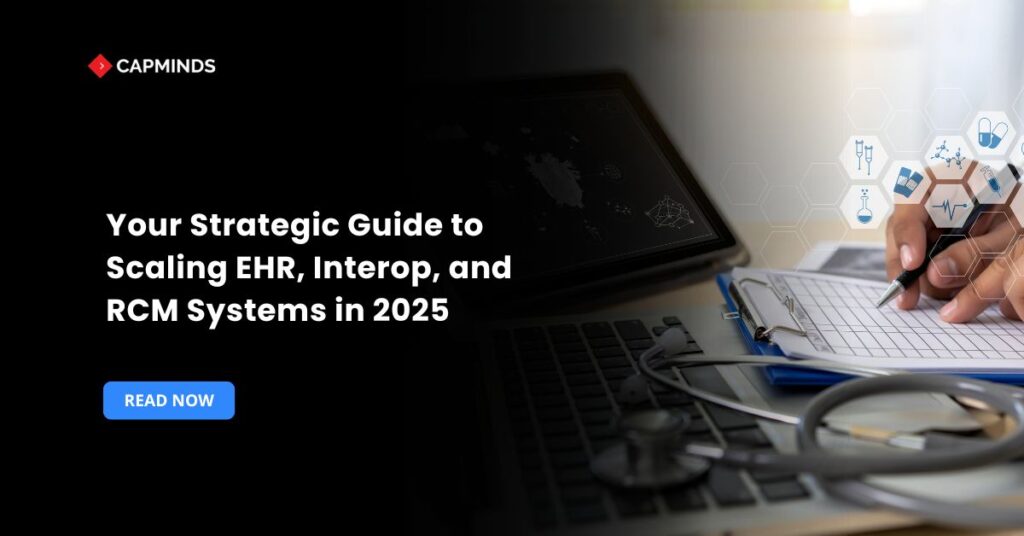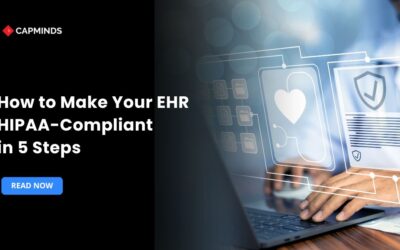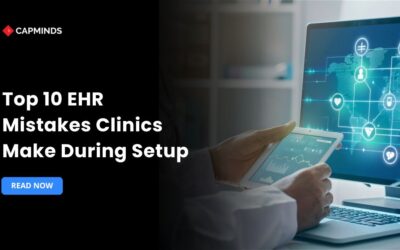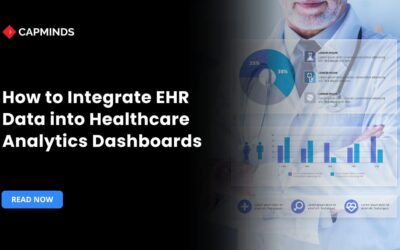Your Strategic Guide to Scaling EHR, Interop, and RCM Systems in 2025
The U.S. health care landscape is entering a new phase of digital transformation. By 2025, hospitals and practices will face surging data volumes, tighter interoperability mandates, and evolving payment policies. To meet these challenges, health IT leaders must modernize infrastructure across electronic health records, data exchange, and revenue cycle management systems. Key trends include cloud-based architectures, API-first integration, and AI-driven automation.
Cloud adoption is now mainstream, with roughly 81% of health IT leaders reporting using cloud for most or all of their operations, enabling on-demand scalability. At the same time, compliance pressures are rising: new ONC rules codify nationwide exchange standards like TEFCA, expand data sets, and update patient-access APIs.
Robust planning and strong governance are critical: experts emphasize that adopting cloud and new technologies “is not just about taking on a new technology; organizations must have a clear strategy detailing the drivers, process changes, and staffing needs that align with their overall vision”.
The sections below outline best practices and technical considerations to help you build scalable, modern EHR/Interop/RCM platforms.
Modernizing and Scaling EHR Infrastructure
Scaling EHR systems begins with a robust, flexible architecture. Many health systems are consolidating legacy platforms into unified EHR suites to simplify management and improve data consistency.
Wherever possible, migrate EHR workloads onto scalable infrastructure, such as public or hybrid cloud environments, to handle peaks in demand and large patient populations. For example, implementing containerized or microservices-based modules can allow each service to scale independently. Essential practices include:
Cloud and Hybrid Deployment
Use cloud environments to elastically provision compute and storage. This supports higher user loads and easier disaster recovery. A recent industry survey found that about 81% of health IT leaders have adopted the cloud in most or all parts of their business. Leverage auto-scaling groups and container orchestration so resources grow with demand.
High Availability and Resilience
Design for redundancy across data centers or cloud availability zones. Employ load balancing, failover clusters, and data replication so clinical systems stay up 24/7. This is crucial for EHRs, where downtime can impact patient care.
Modular Architecture
Break monolithic EHR functions into smaller services connected by APIs. This decoupling allows teams to update or scale one function without affecting others. Modern EHRs often provide API endpoints (FHIR-based or proprietary) for data access – use these to integrate new modules.
Data Partitioning and Archiving
Plan data lifecycle management. Archive or tier older patient records to cheaper storage while keeping active data on fast systems. This reduces the load on transactional databases.
Likewise, use data warehouses or data lakes for analytics and reporting rather than running heavy queries on the live EHR database.
Performance Optimization
Use caching for frequently accessed data to reduce latency. Implement asynchronous processes for non-urgent tasks so they don’t slow clinical workflows. Monitor performance metrics constantly to identify bottlenecks as user count or data volumes grow.
Throughout the modernization process, engage clinical and IT teams. Automate testing and deployment pipelines (DevOps) to ensure updates roll out smoothly.
For example, one recent healthcare IT migration noted that automated deployment tools and cloud-native monitoring gave staff “better visibility” and let teams “do a lot more in less time”. In summary, treat EHR scaling as an integrated IT program: apply cloud resources, distributed services, and best-of-breed tools while maintaining strict clinical uptime.
Related: FHIR, TEFCA & UDS+: How Enterprise-Scale Health Systems Are Gearing Up
Achieving Robust Interoperability
Building scalable systems also means breaking down data gaps. National interoperability mandates and industry standards make this a top priority. Key strategies include:
Implement FHIR-based APIs
The HL7 FHIR standard is now a core enabler of data exchange. FHIR uses modern web technologies to share granular health data packets.
This modern framework “reduces barriers for developers to create applications that meet healthcare needs,” and its RESTful API design “makes it easy…to integrate with existing systems”.
By adopting FHIR, an organization ensures that new and legacy systems can interoperate more easily.
- For example, patient and provider portals can retrieve real-time record data via FHIR APIs without complex custom interfaces.
- FHIR also standardizes data models: it provides a “common data model and a consistent approach for accessing and modifying healthcare information” across systems.
- In practice, ensure your EHR and ancillary software expose certified FHIR endpoints.
Notably, ONC’s 2023 final rule requires certified health IT to adopt the latest SMART App Launch 2.0 standard by 2026, which enhances security and app integration capabilities.
Adhere to ONC Certification Standards
Under the 21st Century Cures Act and ONC final rules, certified EHR systems must support a core data set and patient-access APIs. Starting January 1, 2026, USCDI Version 3 becomes the baseline data standard. This expanded USCDI includes new elements, so your system must capture and share these fields.
Additionally, ensure your patient-facing API complies with ONC’s security requirements: e.g., short-lived OAuth tokens and accessible SMART API endpoints. Regularly update certifications and run compliance checks so that, as data standards evolve, your interfaces stay current.
Leverage the Trusted Exchange Framework
TEFCA is the nationwide interoperability initiative that establishes legal and technical rules for health data networks. In late 2024, HHS/ONC published the final TEFCA rule, solidifying a “floor for nationwide interoperability” and enabling full network-to-network exchange of health information.
Qualified networks are onboarding and will soon exchange data by common standards. Hospitals should plan to participate.
- Awareness is already growing: a 2023 survey found over 60% of hospitals were aware of TEFCA and planned to participate.
- Participation isn’t mandatory, but joining TEFCA can broaden data-sharing partners.
- In practical terms, align your connectivity strategy: make sure your organization’s health information exchange or network affiliations can connect to TEFCA-compliant hubs.
TEFCA will streamline trust frameworks, so in the future, patients’ records can flow seamlessly between providers across regions.
Optimize Integration and Middleware
Even with FHIR and TEFCA, hospitals still need integration hubs for non-FHIR data. Use a scalable integration engine or enterprise service bus that can transform and route messages reliably. Where possible, replace batch file transfers with real-time APIs or direct queries.
Enterprise master patient indexing and health information exchange platforms should be updated to handle growing data volumes. Security and audit logging at each interface are critical to meet HIPAA requirements.
Continuous Compliance with Information-Blocking Rules
Finally, remember that ONC’s information-blocking regulations impose penalties for unreasonably withholding EHI. This means your systems and policies must enable lawful data requests.
- For example, patient requests for data or third-party app access must be fulfilled promptly.
- Avoid contractual or technical barriers that could be interpreted as blocking.
- Modern interoperable platforms are designed to make data sharing routine, which naturally supports compliance.
Together, these interoperability steps, standardized APIs, compliance with ONC rules, and engagement with TEFCA ensure data flows smoothly. As one expert noted, FHIR “is revolutionizing how clinical data is exchanged across the healthcare ecosystem,” offering “new and unparalleled opportunities to enhance interoperability, reduce administrative burdens and improve [patient] outcomes”.
In short, build on FHIR and TEFCA foundations to connect your systems both within the hospital and beyond, creating a scalable exchange framework that grows with your needs.
Related: Cut EHR Licensing Costs by 60%: OpenEMR vs. Legacy Systems for Enterprise-Scale Operations
Optimizing and Scaling RCM Systems
Revenue cycle management is a natural partner to EHR scaling: efficient billing and claims processes keep cash flow healthy as patient volume grows. Key considerations include automation, integration, and advanced analytics:
Automate Repetitive Tasks
Many RCM tasks can be automated. For example, AI-driven natural language processing tools can automatically assign billing codes from clinical documentation, significantly reducing manual effort and errors.
Similarly, automated claim-scrubbing engines use AI to identify and correct claim errors before submission, which cuts denials. Adopting these tools means fewer rejected claims and less rework.
Use Predictive Analytics
Deploy machine-learning models to flag issues before they occur. For instance, AI can predict likely claim denials and their causes, allowing staff to address issues proactively.
Predictive analytics can also power accurate revenue forecasting: AI engines provide reliable cash-flow projections to aid budgeting and resource planning.
In practice, a predictive denial model might analyze historical claims data to score each new claim for denial risk, routing high-risk claims into a fast-track review queue. Over time, this reduces write-offs and improves collections.
Leverage Patient Financial Tools
Automate patient billing and payment plans. Advanced RCM platforms can analyze a patient’s financial profile and insurance details to offer personalized payment options upfront.
For example, AI can suggest an installment plan or financial assistance eligibility, improving collections and patient satisfaction. Chatbots or automated reminders can handle routine billing inquiries, freeing staff for complex cases. These modern patient-engagement tools improve the patient experience and reduce delinquent accounts.
Integrate RCM with Clinical Systems
Close the loop between clinical EHRs and financial systems. Make sure demographic updates, insurance information, and clinical services flow directly into the billing system in real time.
This prevents data entry errors and speeds up charge capture. Similarly, feed payer feedback back to patient accounting quickly. Building these interfaces ensures that as patient volume scales, the information needed for billing scales too.
Use Cloud-Based RCM and Data Analytics
Modern RCM solutions often run in the cloud, which can handle varying workloads and large data sets. Moving RCM infrastructure to cloud platforms can improve uptime and disaster recovery for billing processes.
- One RCM provider reported that a cloud migration improved disaster-recovery readiness and allowed faster application deployments.
- Cloud RCM also makes it easier to spin up new business intelligence workloads – for example, running large-scale analytics on claims and cost data without overloading local systems.
- Consider augmenting your RCM with a scalable data warehouse or analytics platform to mine insights on denials, underpayments, and operational bottlenecks.
These technologies matter because healthcare finance is increasingly complex. A recent industry survey found that 73% of revenue-cycle leaders report that claim denials are increasing, often attributing this to insufficient automation and analytics.
Likewise, 84% of providers say reducing claim denials is a high priority. In this environment, AI and RPA are not nice-to-have – they are essential.
- For example, a 2024 report highlights that, as one hospital executive put it, adopting AI/RPA lets teams shift from reactive to proactive decision-making in a “highly regulated and complex payment environment,”.
- In practice, hospitals are using bots to automate eligibility checks, generate appeal letters, and validate insurance coverage.
- The result is faster reimbursements, fewer write-offs, and a lower staffing burden for back-office teams.
Related: 5 Hidden Costs of Aging Health IT Infrastructure
Compliance and Best Practices for Scale
Finally, scalable systems must be secure and compliant at every layer. Key best practices include:
Regulatory Compliance
Maintain adherence to HIPAA and HHS/OCR guidelines. This means encrypting PHI at rest and in transit, enforcing strong identity management, and continuously auditing data access.
Scaling systems means more endpoints and users – implement automated security monitoring and incident response. For example, leverage Security Information and Event Management tools to catch breaches in real time. Keep up with new rules: in addition to ONC’s interoperability regulations, note FDA and CMS guidance that may affect your systems.
Data Governance
As data volumes grow, establish a strong data governance framework. Define data ownership, stewardship roles, and data quality standards. Use the master patient index and identity resolution services to ensure patient records are matched correctly across systems.
Standardize metadata so that as new sources come online, data remains consistent. Effective governance supports both clinical care and downstream analytics.
Change Management and Training
Scaling technology isn’t just a technical challenge – it’s a people challenge. Invest in staff training on new systems. Involve end-users early in design/testing so that workflows remain smooth. A tech rollout is more likely to succeed if users understand the changes.
As one RCM chief noted, building in-house expertise was critical: their infrastructure team “became a cloud ops team” and collaborated with partners on migration decisions.
Partnerships and Support
Consider partnering with experienced IT integrators or vendors who can provide scaling expertise. Even without naming companies, it’s wise to use certified solutions and consult with peers to benchmark best practices. Seek solutions that comply with industry standards and have strong track records in healthcare environments.
By balancing innovation with rigorous governance, organizations can avoid pitfalls. For example, regularly test your disaster recovery and business continuity plans at scale.
If using AI, address ethical and bias concerns. Above all, maintain a culture of continuous improvement: solicit feedback from users, monitor KPIs, and iterate.
Ready to Transform Your Health IT Strategy? CapMinds is here to assist
At CapMinds, we specialize in helping hospitals and health systems like yours modernize EHR platforms, unlock seamless interoperability, and supercharge revenue cycle management with AI-driven automation.
Whether you’re just beginning your cloud migration journey, gearing up for ONC certification updates, or looking to slash claim denials, our team of health-IT experts has the proven methodology and hands-on experience to get you there on time and budget.
- We’ll map your current state, identify gaps and opportunities, and build a tailored roadmap.
- From FHIR-based API rollouts to advanced RPA workflows, we deploy solutions that scale with your growth.
- We embed best-practice security, compliance, and data-governance frameworks to keep your systems resilient and audit-ready.
Book a 30-minute call with our health-IT strategists today and see how CapMinds can help you turn complexity into a competitive advantage.




